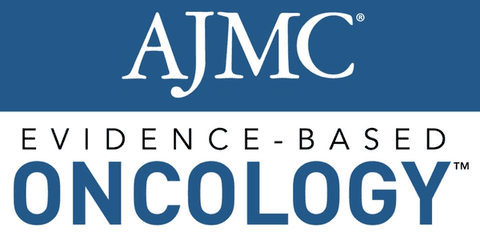Article
FDA Clears Targeted Therapy, Diagnostic for Metastatic RET Fusion-Positive NSCLC
Author(s):
Pralsetinib (Gavreto), developed by Blueprint Medicines, received accelerated approval. Thermo Fisher Scientific's Oncomine Dx Target Test received premarket approval as a companion diagnostic to identify patients who are candidates for the once-daily oral RET-targeted therapy.
The FDA has cleared a targeted therapy as well as a companion diagnostic for patients with metastatic RET fusion-positive non–small cell lung cancer (NSCLC).
These patients, with alterations in the RET gene, have historically had limited treatment options.
Pralsetinib (Gavreto), developed by Blueprint Medicines, received accelerated approval. Thermo Fisher Scientific's Oncomine Dx Target Test received premarket approval from the FDA as a companion diagnostic (CDx) to identify patients who are candidates for the once-daily oral RET-targeted therapy.
Pralsetinib is designed to selectively and potently block RET alterations that drive a number of cancer types, including approximately 1% to 2% of patients with NSCLC. Currently, RET is 1 of 7 NSCLC biomarkers that can be targeted with an FDA-approved therapy.
The approval of pralsetinib was based on results observed in the ongoing phase 1/2 ARROW clinical trial, which demonstrated efficacy for pralsetinib in patients with RET fusion-positive NSCLC with or without prior therapy and regardless of RET fusion partner or central nervous system involvement. Continued approval for this indication, however, may be dependent upon verification and description of clinical benefit in a confirmatory trial.
In July, Roche agreed to invest heavily in Blueprint Medicines, paying $675 million in cash in addition to a $100 million equity investment; Blueprint Medicines is eligible to receive up to $927 million in potential milestones, plus royalties on net product sales outside the United States. The drug may also have promise as a tumor-agnostic treatment.
In 87 patients who were previously treated with platinum-based chemotherapy, the overall response rate (ORR) was 57% (95% CI, 46%-68%) with a 5.7% complete response (CR) rate, and the median duration of response (DOR) was not estimable (95% CI, 15.2 months to not estimable). Moreover, among 27 treatment-naïve patients who were ineligible for platinum-based chemotherapy per the study protocol, the ORR was 70% (95% CI, 50%-86%) with an 11% CR rate, and the median DOR was 9.0 months (95% CI, 6.3 months to not estimable).
Overall, the most common adverse events observed in the study were fatigue, constipation, musculoskeletal pain, and hypertension.
Pralsetinib should be available in the United States within 1 week in a 100-mg dose strength. The recommended starting dose is 400 mg once daily.
The FDA also granted priority review to a new drug application for pralsetinib for the treatment of patients with advanced or metastatic RET-mutant medullary thyroid cancer and RET fusion-positive thyroid cancer. A Prescription Drug User Fee Act date was set by the FDA for February 28, 2021.
NSCLC makes up 85% of all US lung cancers. RET fusions are on the list of key markers recommended for multibiomarker testing in NSCLC by National Comprehensive Cancer Network guidelines.
Thermo Fisher said its Oncomine Dx Target Test simultaneously evaluates 23 genes clinically associated with NSCLC. In 2017, the FDA approved it as a CDx to identify patients who may be eligible for 3 specific targeted therapies for NSCLC.




